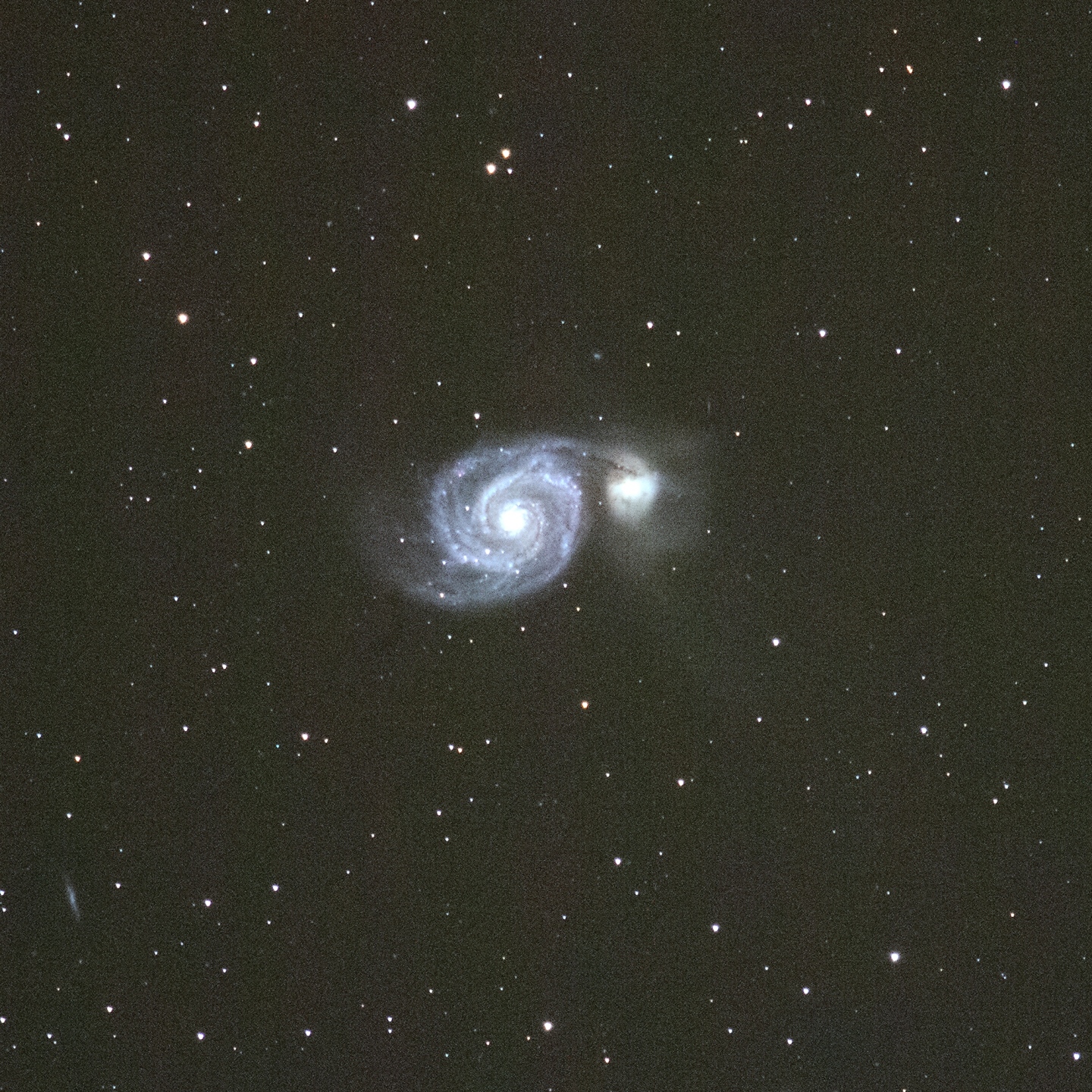

Linear Noise Reduction: MultiscaleLinearTransform was used to reduce noise in the background areas, using an internal mask to protect bright structures. Gradient Removal: DBE was applied to Luminance and RGB masters using Subtraction.Ĭolour Balancing: Colour of the RGB master was balanced with ColorCalibration. The RGB master was aligned to the Luminance master using StarAlignment

DrizzleIntegration (1x) was applied to the registered RGB images. Preprocessing: The WeightedBatchPreProcessing script was used to create Luminance and H-alpha master frames (from the mono camera) and a RGB master frame (from the one-shot colour camera). Luminance: Sky-Watcher Esprit 150 f/7 refractor and QHY600M camera with Optolong UV/IR filterĬhrominance: Takahashi FSQ-106 ED IV f/5 and QHY367C Pro one-shot colour camera with Optolong UV/IR filter Data acquired May 8-13, 2021 in a moonless sky. All pre-processing and processing in PixInsight.
#Spiral galaxy m51 pro#
Equipment control with PrimaLuce Labs Eagle 3 Pro computer. Focus with Optec DirectSync motor and controller. This group and two others (the M101 group and the NGC5866 group) may be part of a single, large, loose group of galaxies, since all lie at similar distances.Īcquisition, focusing, and control of Paramount MX mount (unguided) with N.I.N.A. You can see several other members throughout this field. M51 and NGC5195 are the largest members of the M51 Group of galaxies. The knots in the blue arms are star clusters, similar to M35 and NGC2158. The pink features in M51 are emission nebulae, similar to the Rosette Nebula in our galaxy. The Whirlpool Galaxy is about 60,000 light years across and has a mass of around 160 billion times that of our Sun. The pair lie about 30 million light years away, beneath the end star of the handle of the Big Dipper. M51 has also smeared out its companion, towards upper left and lower right. The two are interacting, and you can see that the smaller galaxy has distorted M51’s arms. Right of the Whirlpool Galaxy is NGC5195. It’s fairly bright and I’ve seen it in binoculars in a reasonably dark sky. M51 is the galaxy in which spiral structure was first seen, by Lord Rosse in 1845 using a 72-inch telescope known as the “Leviathan of Parsonstown.” The galaxy was discovered in 1773 by Charles Messier.

Image Calibraton – Sky & Telescope, Nov 2019.Treasures of the Sharpless Catalogue – Sky & Telescope, June 2020.Double Vision – Sky & Telescope, Oct 2020.Essential Imaging Tasks for Cloudy Nights and Sunny Days – Sky News, Jan/Feb 2021.Dark Nebulae – Sky & Telescope, Dec 2021.BBC Sky at Night – Boost Imaging Productivity – March 2022.

Deep-Sky Palettes – Sky & Telescope, June 2022.Sky-Watcher Esprit 150mm f/7 on Paramount MX.


 0 kommentar(er)
0 kommentar(er)
